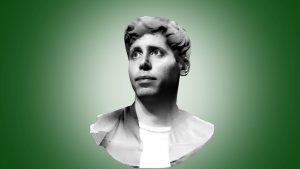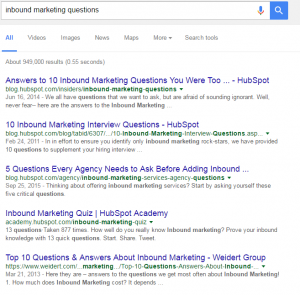Here are the 3 ways workers learn their most valuable skills
In his new book, AI expert Matt Beane explores how employees can protect and sharpen their skills for the future of work.
BY Matt Beane
Think about your most valuable skill. The thing you can reliably do under pressure that delivers results—and looks like magic to those nearby. How did you learn it? Decades of research suggest that you achieved mastery the same way: by working with someone who knew more than you did.
Welcome to the expert-novice bond—a relationship that predates most of what we consider to be civilization. Experts can’t do what they do without help. Novices want to help, and to learn. Formal learning, at best, just gets you table stakes. It lets you start playing the game. But having conceptual knowledge about the work or doing practice exercises is very different from being able to do the work under pressure. To get there, most of us still rely primarily on collaboration with an expert.
Over the past 10 years doing research on technology and work, I’ve found the hidden code that makes this relationship so powerful. When I say “code” here, I’m talking about something like the DNA of how we learn our most valuable skills. The working relationship between experts and novices is a bundle of three Cs that humans need to develop mastery: challenge, complexity, and connection. Like the four amino acids are to genetics, the three Cs are the basic building blocks of how we learn our most valuable skills. Take a look back and you will find them in your own journey to mastery, and in how you’ve helped others build mastery.
Challenge
Decades of research on education, motor skill, the psychology of learning, the sociology of occupations—and now even neurobiology and artificial intelligence—confirm that we learn best when we get healthy challenge: too much, and we burn out. Too little, and we stagnate.
Two researchers, Mark Guadagnoli and Timothy Lee, suggested that learners would do best when they worked at their “optimal challenge point.” This is a point where you build the most long-term skill and confidence while still performing well on the task in the short run. Just like many things in life, this is a Goldilocks phenomenon: not too difficult, not too easy. Performance will be hard, and you won’t do your best, but the task will seem doable, and you can adjust the difficulty to suit your increasing skill.
You’re facing healthy challenge when:
- You have work that’s near—not way below or beyond—your capabilities.
- The level of challenge isn’t constant: Parts of the work are straightforward to you.
- You want to get better at this work, and you don’t want to fail.
- You still fail in small ways, every time you try; part of your challenge involves recovering from small failures.
- You have time to recover—either during straightforward work or off the job.
- You have enough work in front of you to face similar challenges once you have recovered from the first burst.
- You create, seek, and even compete for challenge when it’s in limited supply.
- In return, experts make sure you’re on the same page about the goal, and help you manage frustration.
- They retune their guidance to your developing skill and adjust their approach to match the work.
- Finally, experts reserve their help for tasks that are just a bit more challenging than you could handle on your own. They stop helping you cope with challenge as you start being able to take it on yourself.
Complexity
The traditions of psychology, education, sociology, neurobiology, and artificial intelligence offer strong support for the idea that we need healthy encounters with complexity for optimal skill development. Too much, and we’re overwhelmed. Too little, and we can stop growing.
We now know people learn best when they are put in realistic situations that are dynamic and interconnected—complex, not perfect. This is the difference between holding your hands in the right place over the keyboard versus typing at a reasonable clip in a loud café or a swaying sailboat.
There’s another critical component of how we come to terms with complexity: reflection. Research on learning and skill building agree on this point: You don’t just build skill by doing. You need time away from the action to make sense of all the complexity you’ve dealt with.
Research also shows us that mental representation work—the task of tackling all this complexity down to an understanding that helps us act skillfully in the situation—mostly occurs after the work is over, when we get a chance to rest and reflect. After a little soak time, we can see patterns in the action that we couldn’t before, and these new patterns allow us to at least see a way to act more skillfully the next time we try.
You’re facing healthy complexity when:
- You learn basic facts about the work close to when you have to get started.
- You minimize up-front explicit learning—once you’re oriented, it’s usually better to learn implicitly by getting to work.
- You reserve explicit direction and instruction to direct attention toward complexity but avoid interpreting it.
- You have slack time to reflect on the work.
- You reflect through visualization.
- You don’t try to control your automatic responses in the work by consciously thinking through rules.
- You get time enough away from the work to forget about some significant parts of it.
- You have an expert who asks about or redirects what you’re paying attention to, but who limits telling you about what you’re seeing or why it is the way it is.
- In return, experts treat your naivete as an asset.
- The better you get at a task, the more you look into your broader work context and pay more attention to parts of it that interest you.
Connection
We often celebrate leaders who received The Devil Wears Prada-style mentorship—isolation, lack of direction, harsh critique—but these are typically the harbinger of poor skills development. Want a chance to work at all, let alone get access to healthy challenge and complexity? Good luck getting it on your own. One or more people have the power to admit you to the party, let you stay, and lend support. But there’s also a more internally oriented aspect that’s about personal meaning: We get motivation for our work when it builds respect and trust with those who share our values.
We are not born with an idea of what we choose to pursue and master—the specific competence targets we aim for. The only place we can get those goals and motivation is from the people around us as we bond with them and seek their approval. The longer we willingly choose that relational environment, the more we internalize it all. This is true whether we become motorcycle mechanics, rocket scientists, actors, college professors, or book editors. Other people guide us and help shape our understanding of what’s appropriate and inappropriate, valuable and not valuable, right and wrong, and so on. The strength of our connection with others shows us what skills we want to develop.

A connection is healthy for your skill when it:
- Provides warmth, bonding, and care.
- Gives both of you a sense that you and your work are significant in others’ eyes.
- Builds trust.
- Builds respect.
- Involves both of you being carefully attuned to each other, limiting distractions and judgments.
- Gives both of you feedback on how the relationship is going.
- Involves joint adjustment of goals, methods, and work assignments to allow both of you satisfying authorship of your work and skills journey.
- Eventually allows you to coach and teach others as you reach solid skill yourself.
- Eventually results in the expert advocating for you outside your shared project.
- Results in a “breakup” when you’ve built enough skill to handle complex projects mostly on your own.
Excerpted with permission from The Skill Code: How to Save Human Ability in an Age of Intelligent Machines (Harper Business; June 11, 2024) by Matt Beane.
(5)
Report Post








